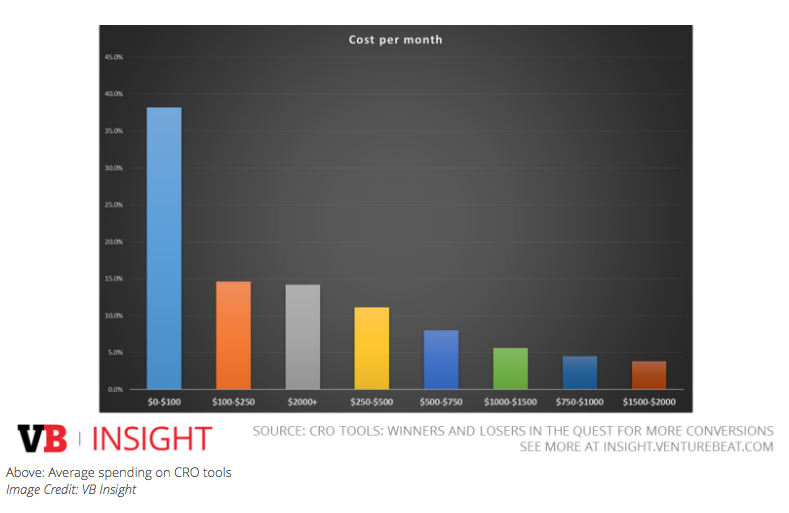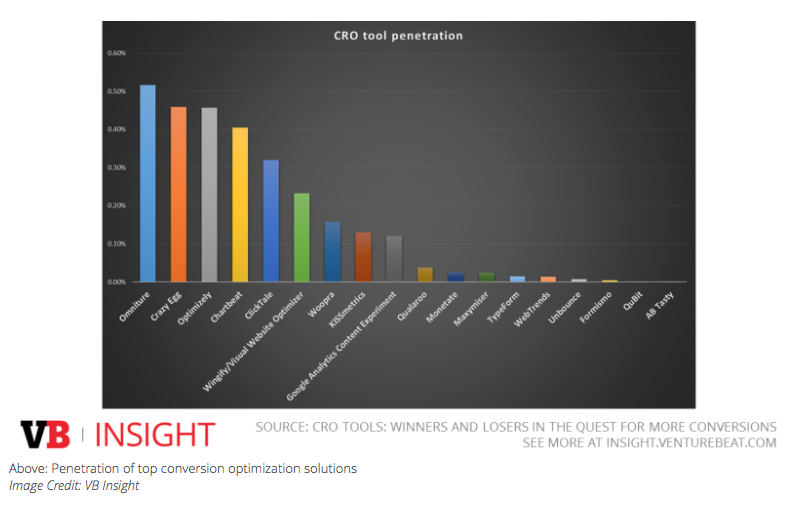Conversion optimization is quite a term — and also an effective tool when it comes to utilizing them to improve business.
VentureBeat recently posted an article where a number of marketing professionals provided insight in terms of the effectiveness of conversion optimization. A new study by the site indicated that, of the 36 different conversion optimization tools looked at, only two managed to come up short when it came to generating substantial return on investment. That means 34 successful tools at hand.
In addition, only five percent of those surveyed (out of nearly 3,000) indicated that ROI was not generated, showing an average of 223.7 percent overall. 173 of those surveyed stated that returns reached as high as over 1,000 percent — a mighty increase, indeed.
Conversation rate optimization allows marketers to improve on certain actions within their campaign, be it with interaction with an app or online. As a result, a lot of companies are spending money on these tools, nearly up to $2,000 on a monthly basis.

The chart above shows just how much companies spend on certain tools, and while those in the under $100 bracket lead the charge, there are still a substantial amount spending much more — and those numbers could rise higher within the next few years.
Report author Stewart Rogers noted, “If you can double your conversion rate, you halve your customer acquisition cost. If each customer has a lifetime value of $1,000, and doubling your conversion rate leads to an additional 200 customers per year, the return on investment of your CRO tool is a whopping $200,000 return from a $6,000 spend.”
Out of all the optimization tools out there, Rogers believes that Google Analytics is the most successful, and noted that 73 percent of the marketers surveyed use it consistently.
‘GA is ridiculously popular. It is free, powerful, and gives you almost instant feedback on how changes to your website affect key metrics,” Rogers said. “The issue with GA is that it only reports conversion indicators and data — it doesn’t help you make the changes, serve different versions of web pages to different audiences, test email subject lines, or work out the best combination of messaging and graphics on a landing page.”

According to the chart above, however, Adobe’s Omniture provides the best ability to change certain aspects of a marketing program.
But the real question comes down to what tools work best for marketers and companies, in which Rogers provided some advice. “Optimizely continues to shine for A/B split testing,” Rogers said. “If you’re a small business and can stay within its free tier, it makes complete sense to stick with Optimizely as the product of choice, using GA and other measurement tools like Crazy Egg to see the results. But once you go above the free tier fresh hold, it can get expensive. Of all the tools analyzed and studied, Visual Website Optimizer stands out as a real contender, and it also offers a more comprehensive multivariate testing capability.”
Rogers also selected “best bets” across five different categories, split according to the size of business. A/B split testing leads the charge, followed by multivariate testing; heatmapping; website, funnel and mobile analytics; and user feedback, expert panels, concept testing and surveys.
As for the widespread use of CRO-based tools, Rogers noted, “The simple answer is that CRO is, in reality, the business of creating return for free. Other than the cost of the tool, CRO is about taking existing traffic and improving conversions from it, rather than buying more traffic through advertising. It is much cheaper to optimize 2,000 visits per day and increase the conversion percentage from 10 percent to 20 percent than it is to buy an extra 2,000 visits.”
The report can be downloaded here for $99.

